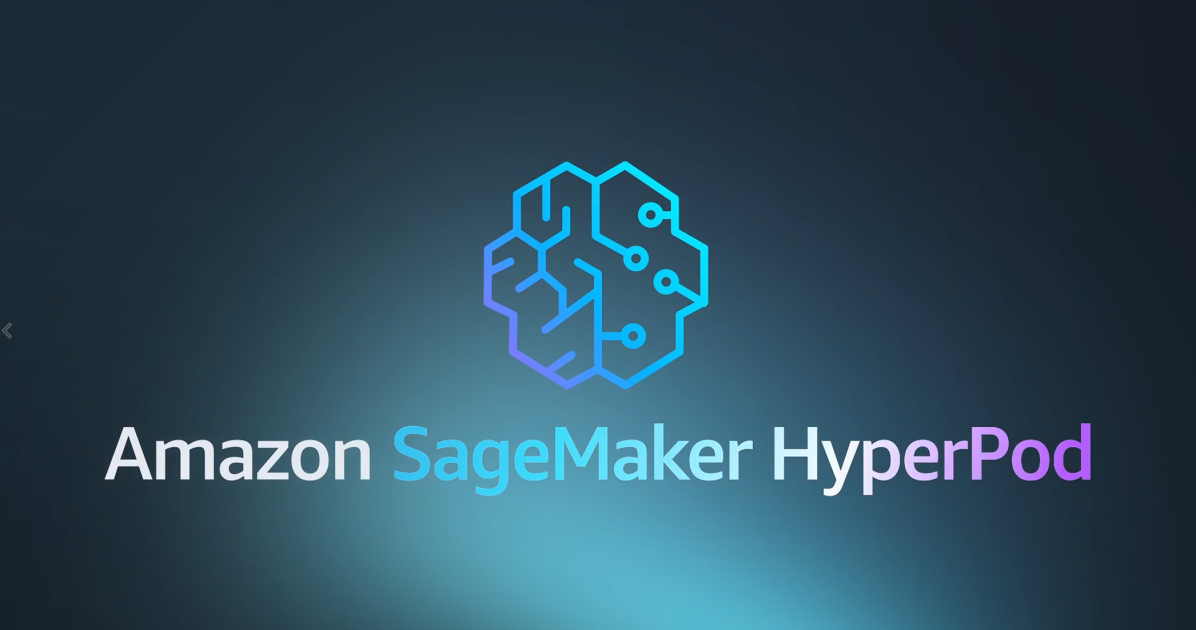
Frontier Firms are moving beyond experimentation and into scaled transformation—powered by human-agent teams—by having agents as members of their team, reinventing processes, providing employees with new skills to scale their impact, and using a modern cloud foundation.
A new kind of enterprise is emerging—and it’s rewriting the rules of leadership.
Microsoft’s 2025 Work Trend Index calls them Frontier Firms: organizations that are not just adopting AI, but are powered by intelligence on tap, human-agent teams, and a new role for everyone; agent boss while rearchitecting their operations around it. These firms are moving beyond experimentation and into scaled transformation—powered by human-agent teams—by having agents as members of their team, reinventing processes, providing employees with new skills to scale their impact, and using a modern cloud foundation.
What’s most inspiring is that they’re not waiting for perfect conditions. They’re building now for a competitive advantage.
- 81% of business leaders expect AI agents to be deeply integrated into workflows within the next 12–18 months.
- 82% say 2025 is a pivotal year to rethink how their organization operates.
- And yet, only a fraction have modernized the infrastructure needed to support this shift.
This is the leadership gap. AI is the defining force of this era—but it can’t thrive on legacy systems. The ability to scale AI responsibly, securely, and enterprise-wide depends on a modern cloud foundation. And that’s where the leaders are separating from the laggards.
The future belongs to the Frontier Firm. And the foundation of every Frontier Firm is a modern cloud. The companies that will lead in AI tomorrow are the ones modernizing their digital core today. Cloud + AI isn’t a tech trend. It’s the new business model.
The gap between digital leaders and digital laggards is no longer theoretical—it’s measurable. While some organizations are reimagining their operating models with AI at the core, others are still debating pilot programs. This divergence is creating a new kind of competitive pressure—one that’s not just about technology, but about time.
In fact, according to the recent Microsoft 2025 Work Trend Index, Frontier Firms are already reshaping their industries. They are faster to market, more adaptive to change, and more efficient in how they scale intelligence across the enterprise. Meanwhile, digital laggards are stuck in a holding pattern, attempting to run AI on infrastructure that wasn’t built for it, managing data in silos that AI can’t learn from, and spending more time maintaining systems than innovating with them.
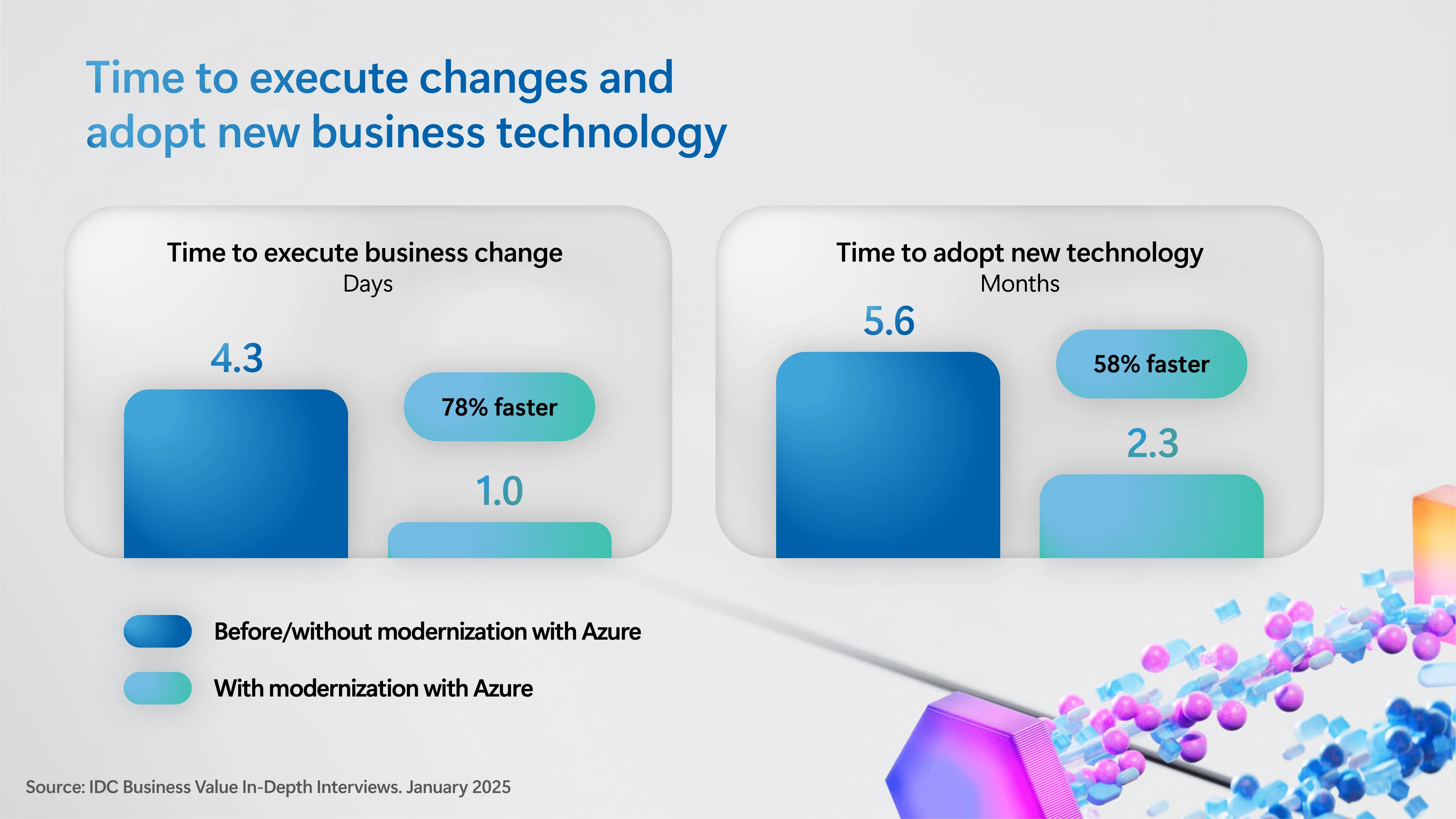
Technical debt is now one of the most significant barriers to digital transformation. This technical debt includes legacy systems that consume a disproportionate share of IT budgets, limits agility, and introduces security and compliance risks. Shifting from project-based funding to continuous modernization models can address this growing burden.
This is where cloud modernization becomes a company-level strategic—not just technical—imperative.
Legacy systems weren’t built for AI. Modernizing with Azure is how leaders unlock its full value—securely, responsibly, and at scale.
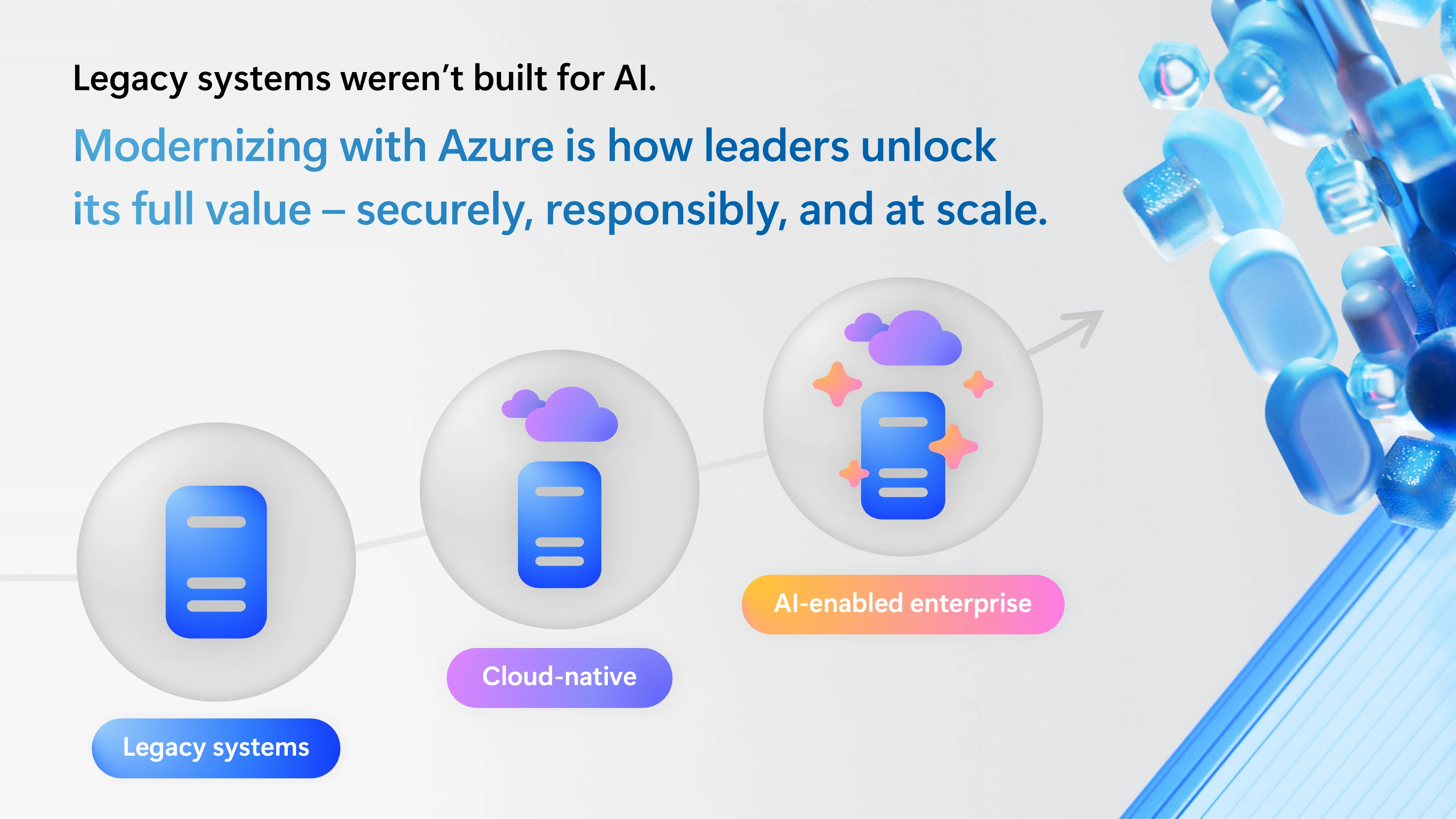
Modernization is a strategic imperative for competitive advantage, requiring rearchitecting business processes, people, and technology to unlock the full power of cloud-native services, advanced analytics, and enterprise-grade AI. Migrating and modernizing to Azure delivers more than technical efficiencies—it enables agility, innovation, and resilience at scale. A research report by IDC highlights numerous business outcomes from customers who have migrated and modernized on Azure. Let’s dive into some of the top strategic outcomes coming out of this report:
Agility: Faster execution of business change
IDC reports a 78% improvement in the speed of executing business changes for organizations modernizing with Azure. In a world where agility is a competitive advantage, this speed enables companies to respond to market shifts, regulatory changes, and customer demands with unprecedented responsiveness. Business leaders can pivot strategies, launch new offerings, or adapt operations quickly, turning agility into a core differentiator.
Innovation: More time focused on strategic initiatives
IDC found that organizations reported 69% time gain for IT teams to focus on innovation. By reducing time spent on maintenance and triaging, teams can invest in building new capabilities, experimenting with AI, and driving digital transformation. This shift allows technology leaders to move from “keeping the lights on” to driving strategic initiatives—such as AI adoption, automation, and digital transformation—that fuel long-term growth.
Speed to market: Accelerated product and service delivery
Modernized organizations saw a 43% faster time to market for new products and services. In fast-moving industries, being first—or fast—can mean the difference between market leadership or irrelevance. This outcome empowers leaders to seize new opportunities, capture market share, and drive revenue growth through innovation.

Resilience: Reduced downtime and risk
IDC reports a 90% reduction in unplanned downtime. That’s a business continuity imperative. In sectors like healthcare, manufacturing, and financial services, downtime can mean lost revenue, reputational damage, or worse. By modernizing on Azure, organizations ensure their critical systems are available and resilient, supporting business continuity and customer trust.
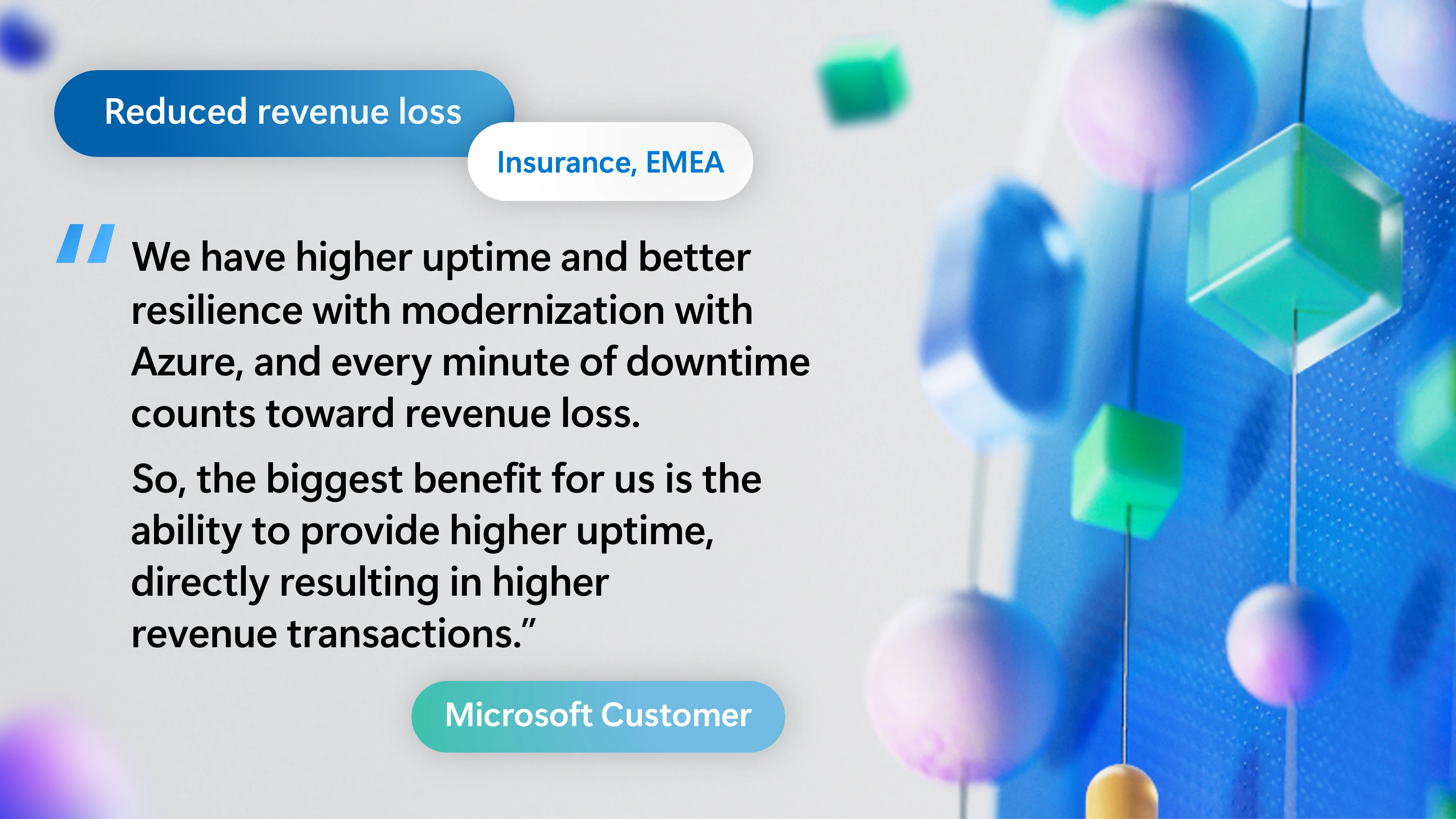
ROI and cost efficiency: Tangible business impact
IDC found a 344% three-year ROI and a 14-month payback period. Organizations also reported $902,700 in annual benefits per migrated and modernized application. These gains come from reduced infrastructure costs, improved performance, and better resource utilization. For business leaders, this means that investments in Azure modernization are not just cost centers, they are profit drivers. Rapid payback frees up capital for further innovation, while high ROI demonstrates that modernization is a growth strategy, not just an IT upgrade.
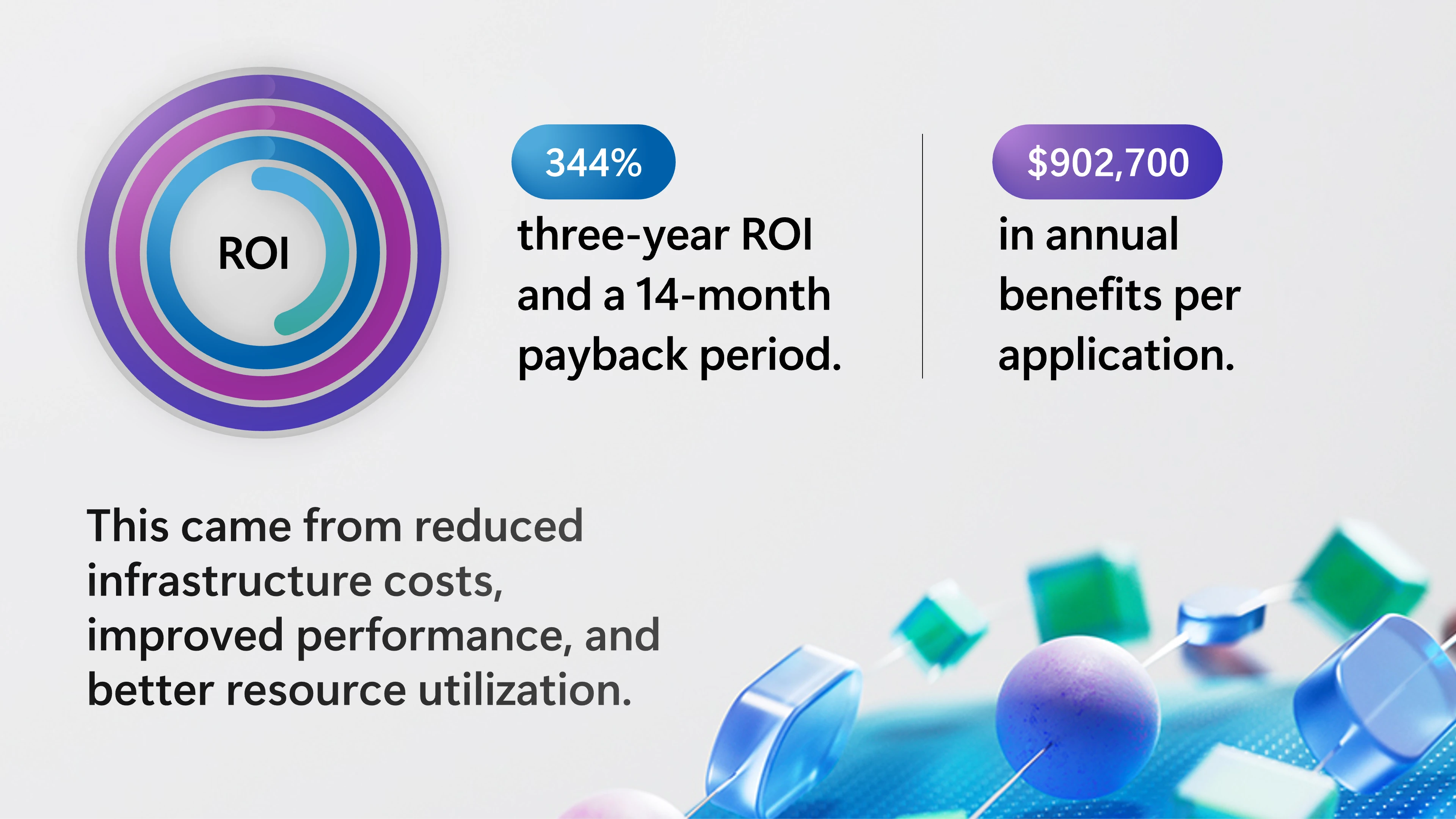
Modernization is a growth engine. The data proves it, and the leaders are already moving.
IDC found that organizations modernizing with Azure saw a 47% improvement in IT agility. That’s not just faster systems, its faster strategy, faster pivots, and faster innovation cycles. The business case is clear: the sooner you modernize, the sooner you unlock the full value of AI.
The future belongs to those who can scale AI responsibly. And that future starts with a modern cloud foundation.
Modernizing with Azure helps you and your team navigate the AI transformation with confidence—building a resilient, secure, and intelligent digital core that empowers your teams, delights your customers, and positions your organization as a leader in the era of AI.
To learn more about how your organization can modernize with Azure, check out the latest App Modernization Guidance and get in touch with your Microsoft expert.

